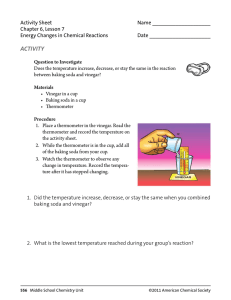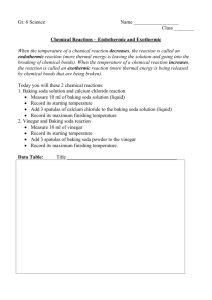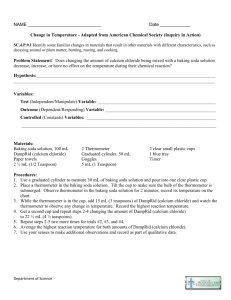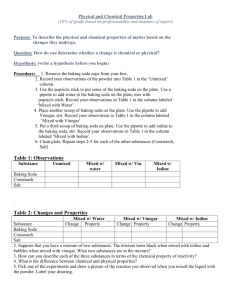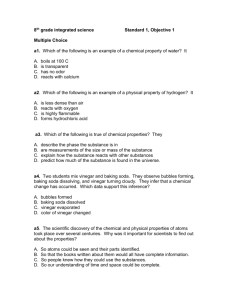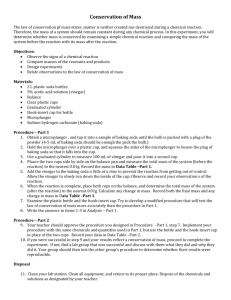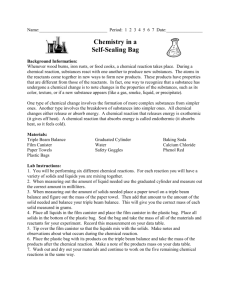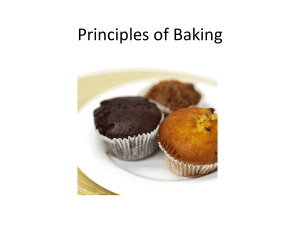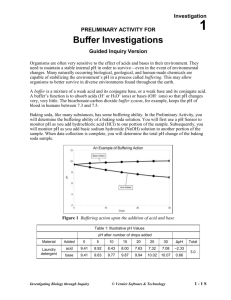Exothermic and Endothermic Lab
advertisement
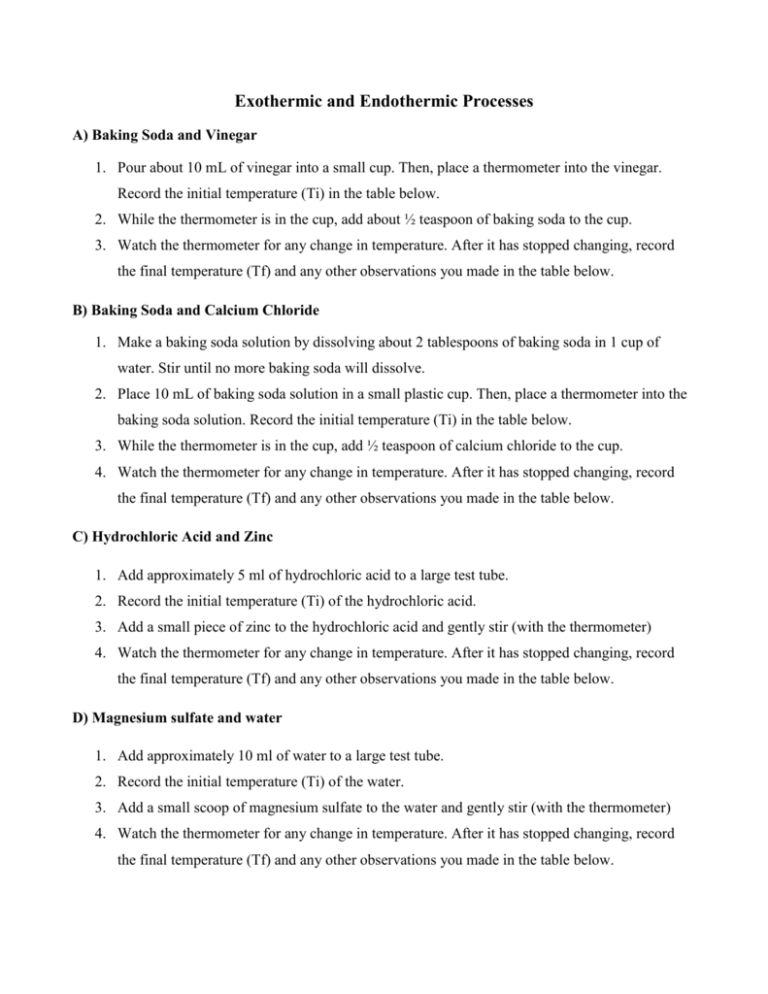
Exothermic and Endothermic Processes A) Baking Soda and Vinegar 1. Pour about 10 mL of vinegar into a small cup. Then, place a thermometer into the vinegar. Record the initial temperature (Ti) in the table below. 2. While the thermometer is in the cup, add about ½ teaspoon of baking soda to the cup. 3. Watch the thermometer for any change in temperature. After it has stopped changing, record the final temperature (Tf) and any other observations you made in the table below. B) Baking Soda and Calcium Chloride 1. Make a baking soda solution by dissolving about 2 tablespoons of baking soda in 1 cup of water. Stir until no more baking soda will dissolve. 2. Place 10 mL of baking soda solution in a small plastic cup. Then, place a thermometer into the baking soda solution. Record the initial temperature (Ti) in the table below. 3. While the thermometer is in the cup, add ½ teaspoon of calcium chloride to the cup. 4. Watch the thermometer for any change in temperature. After it has stopped changing, record the final temperature (Tf) and any other observations you made in the table below. C) Hydrochloric Acid and Zinc 1. Add approximately 5 ml of hydrochloric acid to a large test tube. 2. Record the initial temperature (Ti) of the hydrochloric acid. 3. Add a small piece of zinc to the hydrochloric acid and gently stir (with the thermometer) 4. Watch the thermometer for any change in temperature. After it has stopped changing, record the final temperature (Tf) and any other observations you made in the table below. D) Magnesium sulfate and water 1. Add approximately 10 ml of water to a large test tube. 2. Record the initial temperature (Ti) of the water. 3. Add a small scoop of magnesium sulfate to the water and gently stir (with the thermometer) 4. Watch the thermometer for any change in temperature. After it has stopped changing, record the final temperature (Tf) and any other observations you made in the table below. Procedure A Ti Tf Exothermic or Endothermic Other observations ΔH(+/−) B C D Post Lab Questions 1. In the chemical reaction between baking soda and vinegar, what did you observe other than a temperature change? What might this tell you about one of the products of this chemical change? 2. In the chemical reaction between baking soda solution and calcium chloride, what did you observe other than a temperature change? What might this tell you about one of the products of this chemical change? 3. Use your answers from questions 1 and 2 to help you write the chemical equation for: A) the chemical reaction between baking soda and vinegar B) the chemical reaction between baking soda and calcium chloride 4. Using the language of breaking and making bonds, explain the net energy change for the chemical reaction between baking soda and calcium chloride. 5. How might you use exothermic or endothermic processes to solve a real-world problem? Are there any instances when it would be useful to quickly make something hot or cold? Explain how it is useful to know which processes absorb or release energy. Lab Report Guidelines TITLE Introduction 2 paragraphs (at least 5 sentences per paragraph) Background information only (no procedure, data, conclusion, etc) Clearly state the purpose (ie The purpose of this experiment was to…) Hypothesis If, then format Should clearly align with title and purpose statement Materials Bulleted list of equipment and chemicals Procedure Numbered steps Results Make a table like the one of the hand out Include units for quantitative data Conclusion 2 paragraphs (minimum of 5 sentences per paragraph) Analyze data (compare, contrast) Do not repeat the data table in sentence format Hypothesis supported/not supported by the data? Error analysis Future experiment Post lab questions Number them Answer in complete STAND ALONE sentences

